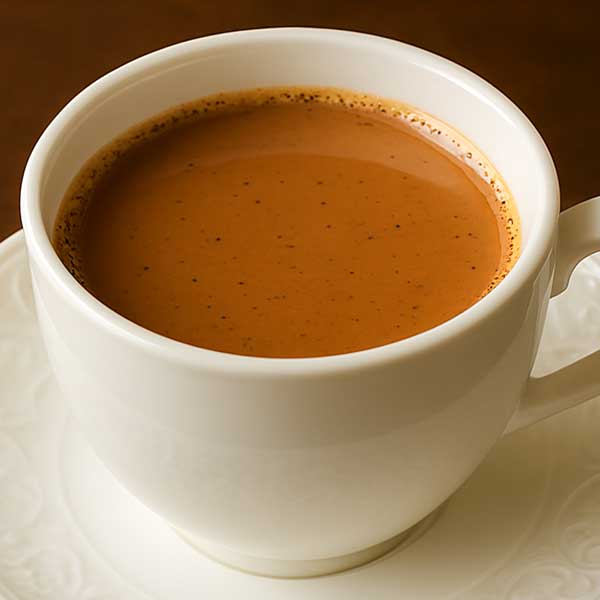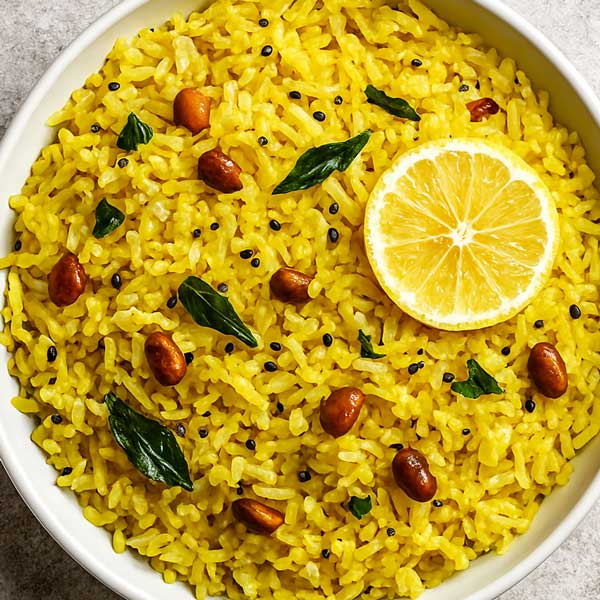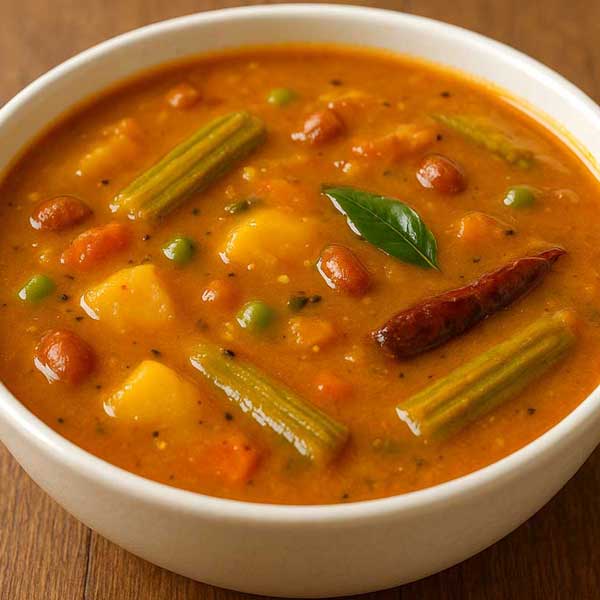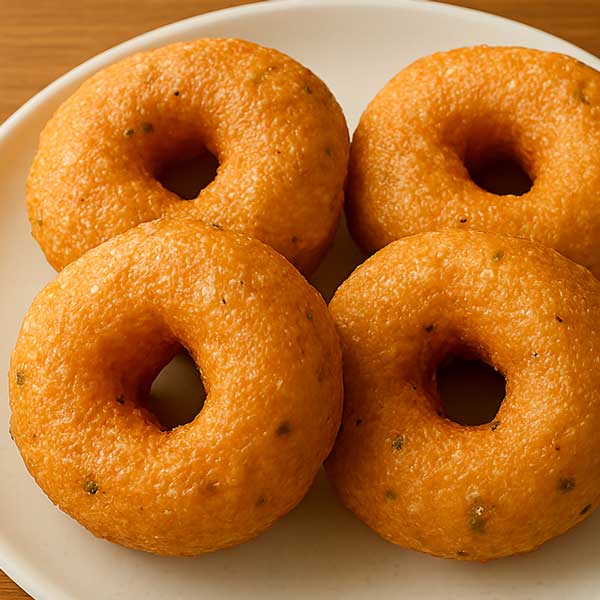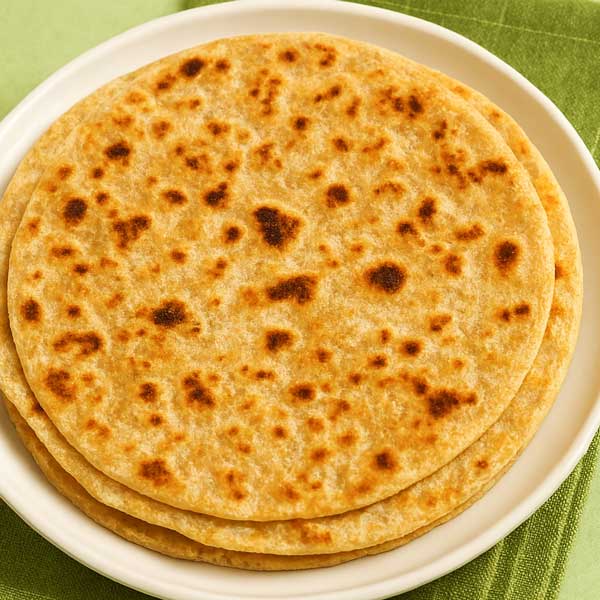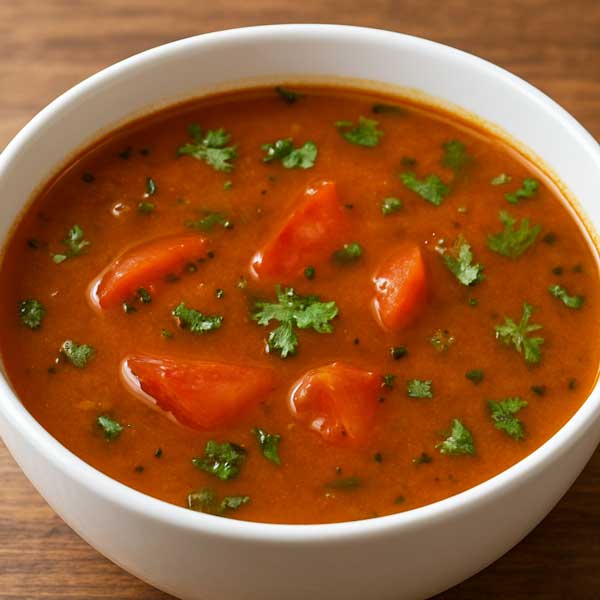Upma Recipe (Sooji/Rava Upma)
Upma is a traditional South Indian breakfast dish made from semolina (rava or sooji) and flavored with aromatic spices. It is a quick and easy dish that is both healthy and satisfying.
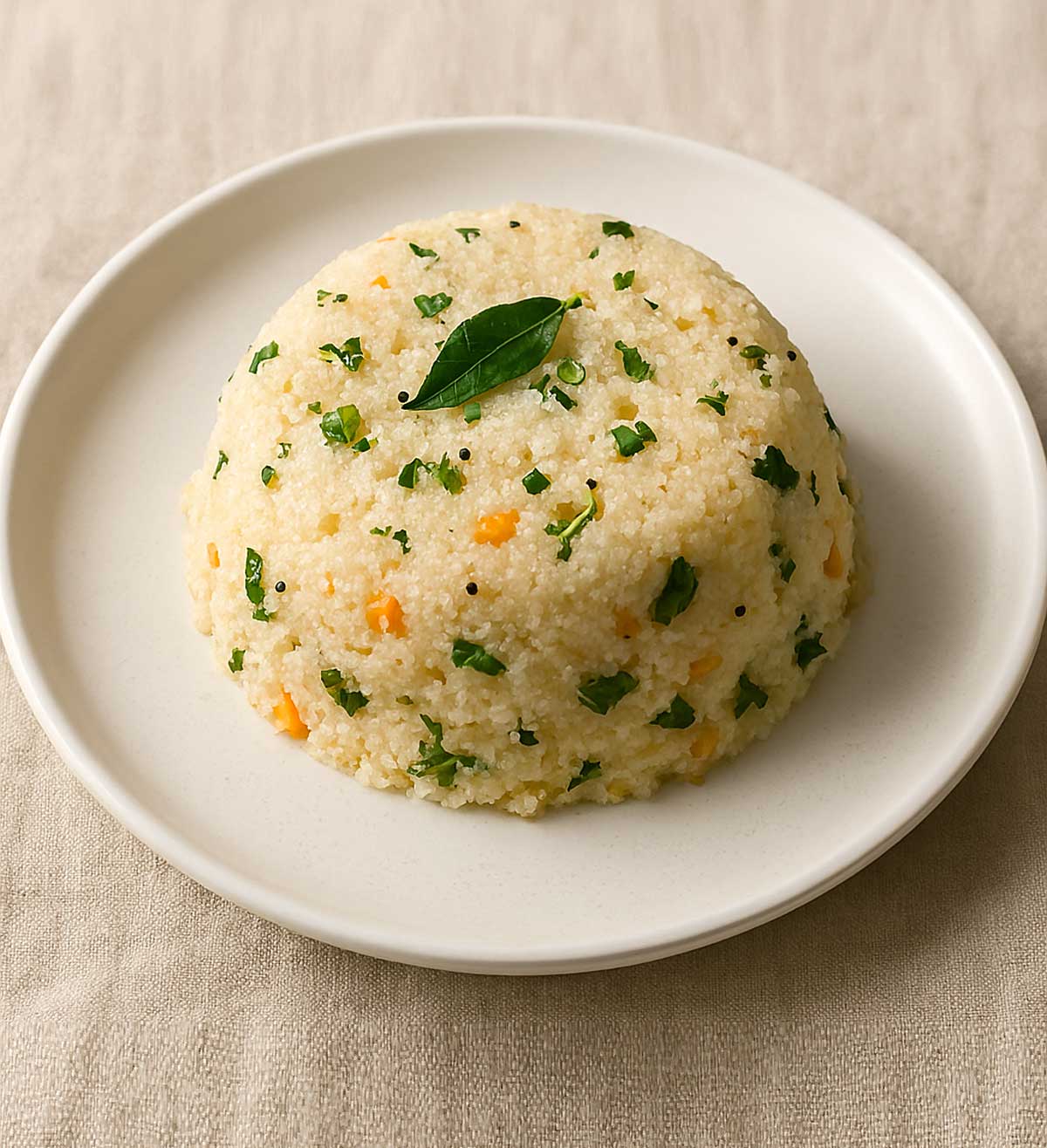
Upma is usually made with semolina, but you can also try Semiya Upma made with vermicelli. Whether you’re looking for how to make soft and fluffy south Indian Upma with sooji, this recipe guide covers all the essentials. This Indian recipe is perfect for those who want an easy-to-cook breakfast meal. Follow this detailed recipe guide with steps to make soft, flavorful, and delicious Upma.
Water Ratio for Upma: How Much Water to Use?
Getting the right water-to-rava ratio is key to making perfect upma. Upma should be soft, fluffy, and lump-free. I usually follow the standard ratio of 1 cup of semolina (rava) to 2 cups of water, which gives a soft but firm texture. If you prefer a mushier, porridge-like consistency in your dish (especially for kids or elderly family members), you can increase the water slightly to 2¼ or even 2½ cups. On the other hand, if you like your upma to be a bit drier and grainier. You can reduce the water to about 1¾ cups. Just remember to always roast the rava first and add it slowly into boiling water while stirring to avoid lumps.
Ingredients and Substitutes
- Semolina (rava/sooji): This is the main ingredient for upma. I usually use medium-coarse rava for the perfect texture but not too grainy, not too mushy. You can use fine rava for a smoother texture or rice rava for a gluten-free version.
- Water: Use the ideal ratio of 1 cup semolina to 2 cups water and roast the semolina well before cooking. I bring the water to a gentle boil before adding the rava. For slightly firmer upma, you can reduce water slightly.
- Cooking Oil or ghee: Oil gives a light texture, you can use any healthy cooking oil. If you like, use coconut oil for a South Indian twist or only ghee for festive occasions.
- Mustard seeds: Adds a nutty, sharp flavor and the classic crackle but it can be skipped if you’re not a fan of mustard.
- Urad dal (split black gram): Gives a nice crunch and nutty bite to each spoonful. If not available, you can skip it or add more chana dal.
- Chana dal (Bengal gram): Adds texture and a mild earthy flavor. I always soak it for 5–10 minutes if I have time, so it softens slightly while cooking.
- Green chilies: Use red chili flakes or black pepper for a twist.
- Ginger: You can use grated ginger. I sometimes crush it slightly to release more flavor.
- Onion: You can skip this ingredient for a no-onion upma version or fasting days.
- Curry leaves: A signature South Indian flavor, as curry leaves adds aroma and depth.
- Turmeric powder: Gives a gentle golden color and mild earthy flavor.
- Carrot: You can use finely chopped beans or capsicum instead of carrots.
- Green peas (optional, fresh or frozen): If using frozen, rinse in warm water before adding.
- Salt: I usually add salt once the water is boiling, just before adding semolina.
- Lemon juice: A final squeeze lifts the whole dish. I add it after turning off the heat.
- Coriander leaves: For garnishing the upma.
- Grated coconut: Traditional in South Indian upma, especially in Tamil or Kerala-style versions. You can also skip if it is not available or use desiccated coconut in small quantity.
You make also like: Idlis, Lemon Rice, Sambar, Medu Vada
How to Make Upma (Stepwise photos)
Roast the Semolina
1. Heat a pan over medium heat and add 1 cup semolina. Dry roast it for 3–4 minutes, stirring continuously, until it turns aromatic and lightly golden. Be careful not to let it burn. Once roasted, transfer the semolina to a plate and set it aside.

Prepare the Tempering
2. Heat 1–2 tablespoons oil or ghee in a pan. Add 1 teaspoon mustard seeds and let them splutter. Wait until they begin to pop, releasing their aroma.
3. Add curry leaves and stir for a few seconds until aromatic. Then add chopped onions and grated ginger, cooking until soft and slightly transparent. Next, add chopped tomatoes and green chilies, cooking until they soften as well. Finally, add 1 tablespoon each of urad dal (split black gram) and chana dal, sautéing until light golden brown.

Cook the Upma
4. Pour in 2 cups of water, add about ½ teaspoon salt (or to taste), and bring it to a boil over medium heat. Once it reaches a rolling boil, reduce the flame to low and gradually add 1 cup roasted semolina (rava), stirring continuously to avoid lumps.
5. Cover and cook for 2–3 minutes until the water is absorbed and the semolina turns soft and fluffy. Turn off the stove and let it rest for a minute.
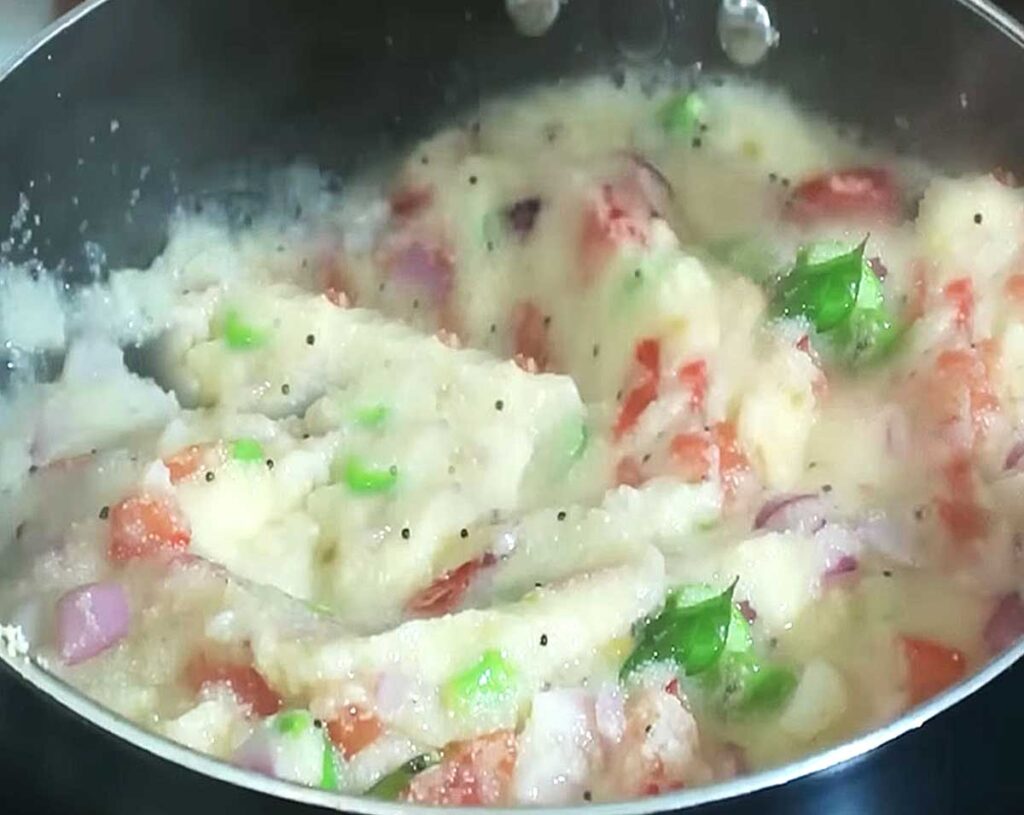
Garnish and Serve
11. Roast peanuts until golden, then sprinkle over the upma recipe and gently mix for crunchy texture and nutty flavor.
12. Garnish the upma with fresh curry leaves. To enhance the flavor, drizzle 1 teaspoon lemon juice over it and sprinkle grated coconut. Serve hot with coconut chutney, pickle, or a side of yogurt.

Serving Suggestions for Rava Upma
Serve upma with coconut chutney for a classic South Indian pairing. The creamy, mildly spiced chutney perfectly complements the savory flavors of upma. You can also pair it with tomato chutney or onion chutney to add a tangy or spicy touch.
In some South Indian households, upma is enjoyed with a ripe banana or a boiled egg for added nutrition. A spoonful of Indian mango pickle or lime pickle brings a burst of heat and tang, while adding vegetables to upma enhances both taste and nutrition.
Rava upma also pairs wonderfully with plain yogurt or a bowl of chilled curd, which balances the spices and adds creaminess. For a complete South Indian breakfast, enjoy your upma with a hot cup of masala chai or traditional filter coffee.
Frequently asked questions
Lumps usually form if the roasted semolina is added too quickly. To prevent this, pour the semolina slowly into boiling water while stirring constantly.
No, upma is not gluten free. Rava (semolina) is made from wheat, so it contains gluten. For a gluten-free version, you can use rice rava, millet rava, or even cornmeal.
You can use fine or medium-grain rava which is also called Bombay rava or upma rava.
Dry upma means there wasn’t enough water and upma turns sticky when there is too much water or not enough roasting. Use the ideal ratio of 1 cup semolina to 2 cups water and roast the semolina well before cooking.
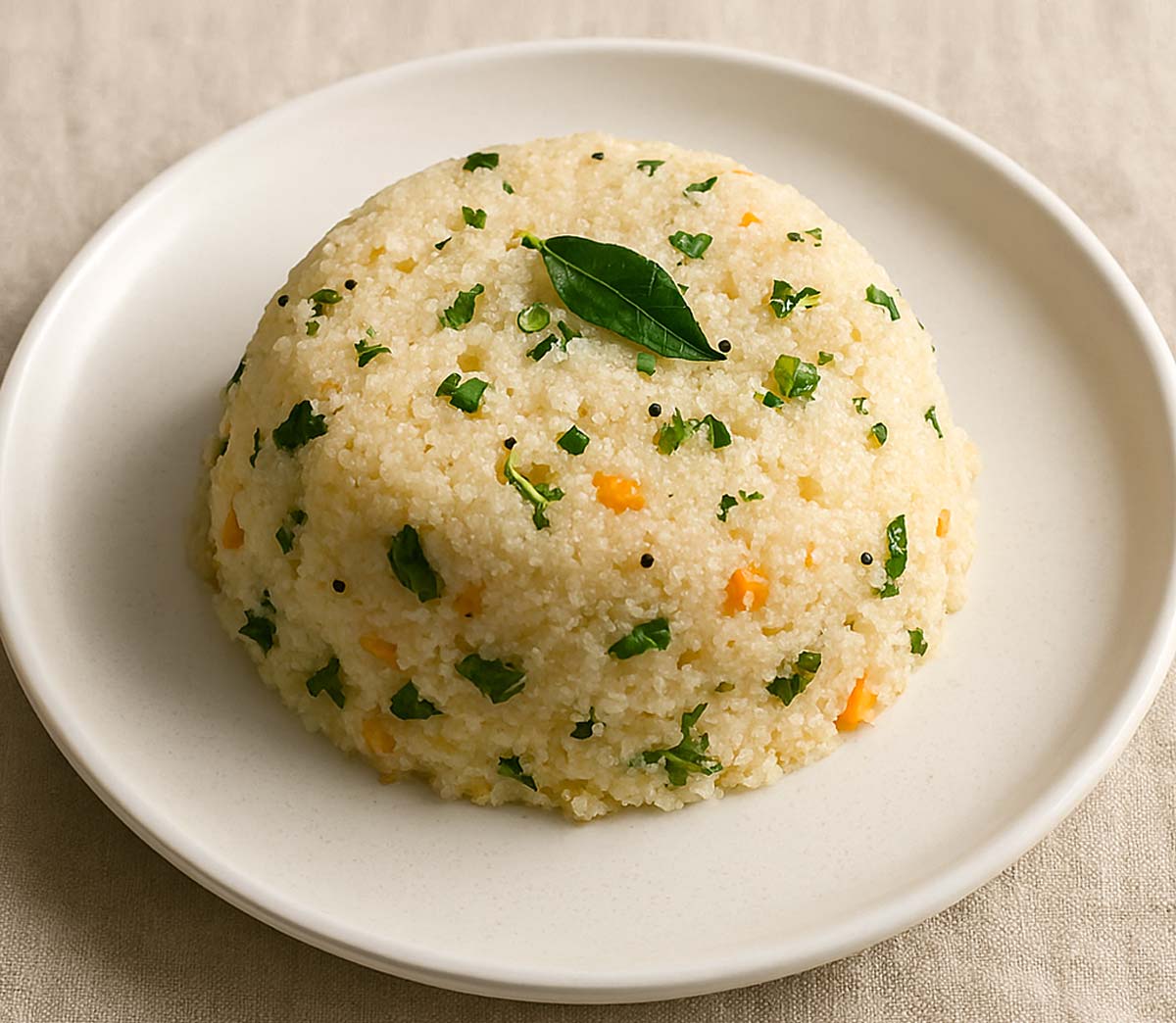
Recipe Card
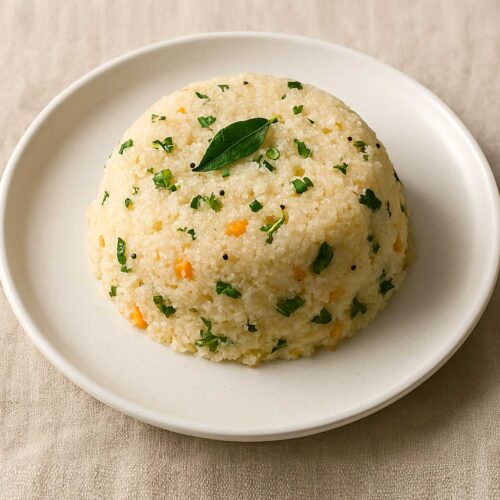
Upma (South Indian Upma Breakfast)
Equipment
- 1 Heavy-bottomed pan
- 1 Frying pan (for roasting peanuts)
- 1 Stirring spoon/spatula
- 1 Measuring cup and spoons
- 1 Knife and chopping board
- 1 Lid for covering the pan
Ingredients
- 1 cup semolina rava/sooji
- 2 cups water
- 2 tbsp oil or ghee
- 1 tsp mustard seeds
- 1 tsp urad dal split black gram
- 1 tsp chana dal Bengal gram
- 1 –2 green chilies finely chopped
- 1 inch piece of ginger grated or finely chopped
- 1 small onion finely chopped
- 10 curry leaves
- 1 medium carrot finely chopped (optional)
- ¼ cup green peas optional
- ¼ tsp turmeric powder optional
- ½ tsp salt or to taste
- 2 tbsp coriander leaves chopped
- 1 tsp lemon juice optional
- 1 tbsp grated coconut optional, for garnish
- 2 tbsp peanuts optional, for crunch
Instructions
- In a dry pan, roast 1 cup semolina over medium heat for 3–4 minutes until aromatic and lightly golden. Stir continuously. Remove and set aside.
- Heat 2 tbsp oil or ghee in a pan. Add mustard seeds and once they splutter, add curry leaves, urad dal, chana dal, and roast until light brown.
- Add onions, ginger, green chilies, and sauté until translucent.
- Next, add chopped vegetables and cook for 2–3 minutes.
- Add 2 cups water and salt. Let it come to a boil and then reduce the flame to low. Gradually add roasted semolina while stirring continuously to avoid lumps.
- Mix well, cover, and cook for 2–3 minutes until the semolina absorbs water and becomes soft. Turn off the heat and let rest for 1–2 minutes.
- In a small pan, heat oil and roast peanuts until golden. Add them to the upma and mix gently.
- Add lemon juice, chopped coriander, and grated coconut (if using) and mix well. Serve Upma with south Indian coconut chutney, yogurt, or pickle.
Notes
- Upma can be stored in an airtight container in the fridge for up to 1 day. Reheat with a splash of water to restore Upma texture.
- Semolina is rich in iron and complex carbs. Adding vegetables in upma increases fiber and vitamins.

